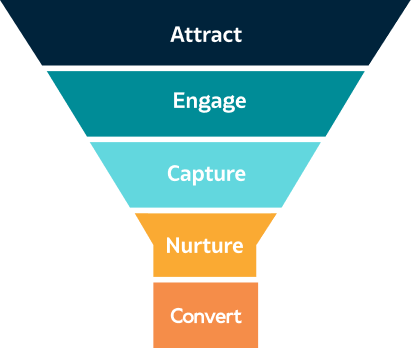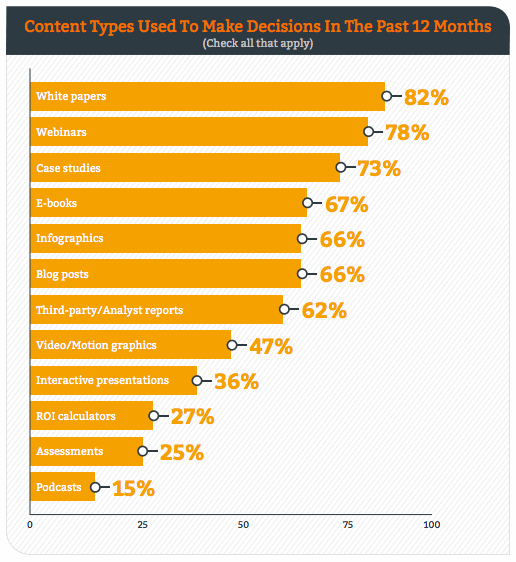Content Marketing: The Complete and Useful Guide [2021]
More than 90% of Internet users search on the Internet before buying a product (Source: HubSpot). Content marketing is today the main factor in a digital marketing strategy. Google loves content and this trend is not about to stop.
However, there is another reality: the web is starting to saturate with content. An example: every second, 8 hours of video is uploaded on youtube…
So, how to stand out and succeed in your content marketing strategy?
To help you, we prepared this complete guide for you. Definition, strategy to adopt, statistics, follow-up… you will know everything.
Let’s go.
What is content marketing?
Content Marketing is a method of creating and distributing useful content in various formats (text, video, audio) to a specific audience.
A content marketing strategy has mainly 2 objectives:
- Develop the notoriety of a brand or a company
- Initiate action on behalf of customers (purchase, registration…)
Therefore, content marketing can be used at various stages of a customer’s life:
- Attract
- Convert
- Conclude
- Building loyalty
Content marketing is one of the main pillars of inbound marketing: attracting customers through content.
Why content marketing?
Content marketing helps to achieve many marketing objectives such as increasing awareness, conversion rate and loyalty.
How to succeed in your market
A content strategy allows you to prove your expertise and turn a stranger into a customer, thanks to targeted and adapted content.
Therefore, content marketing will allow a company to attract traffic to its website, convince the visitor to convert (purchase…) and then retain him.
It will enable the company to become a key player in its market by responding to all of its customers’ issues and supporting them throughout their lifecycle.
Improve your SEO
To have good visibility in the results of search engines such as Google or Bing, it is essential to produce quality content.
Content is one of the 3 main ranking factors (along with technical optimization and notoriety) of the Google algorithm.
Succeeding with social networks strategy
Useful and entertaining content makes it possible to stand out on social networks such as Facebook, Instagram, Linkedin…
A company can fully leverage its digital strategy on social media. Some brands generate huge revenue solely through social media content.
The key statistics of content marketing
Here are some figures that should convince you to adopt a content marketing strategy:
Content marketing in B2B
- 98% of marketing professionals consider a content marketing strategy to be indispensable (Source)
- Content Marketing is 62% less expensive than traditional marketing and generates about 3 times more leads. (Source)
Content marketing in B2C
- 71% of consumers read blog content before making a purchase, and 40% consult 3 to 5 different contents before contacting a seller (Source).
- 70% of consumers hear about a business through articles rather than advertising. (Source).
- 1440 posts are published on WordPress every 60 seconds (Smart Insights)
What are the different types of content?
The contents can be divided into 3 categories:
The text contents
- Blog posts
- White Papers
- Guides
- E-books (guides, case studies, checklist, to-do list…)
- Emails
- Pdf Reports
- Infographics
- Book excerpts…
Video content
- Video recordings: YouTube, Vimeo, Dailymotion…
- Webinars
- Live videos + replay
- Tutorials
- Video FAQ…
Audio content
- Podcasts
- Facebook live audio
- Playlists on streaming platforms: Spotify, Deezer…
The following is a ranking of the best performing B2B content:
How to do content marketing?
Okay, now that you know exactly what content marketing is, let’s get down to business. Here are 7 steps to implementing a winning content marketing strategy.
Step 1: Clearly define objectives and KPIs
Every digital marketing strategy starts with the definition of clear objectives.
In digital marketing, there are 4 main objectives:
- Develop brand awareness
- Increase online presence
- Attracting prospects
- Customer Loyalty
So start by clearly defining your goal as a company or an individual.
How do you know if your actions are working or not?
We advise you to rely on 3 Key Performance Indicators (KPIs).
These indicators depend on what you want to achieve and your business sector. Here are a few examples:
- SEO Traffic
- Conversion rate
- Click rate
- Engagement rate on social networks
- Ranking of your blog articles on search engines
- Number of downloads of one of your resources
As a tip, choose SMART objectives: simple, measurable, achievable, realistic and time-bound.
Step 2: Define your marketing personas
For your content strategy to be effective, it is imperative to know your customers at your fingertips. So how do you do it? By clearly defining one or more robots portraits of your targets. The persona exercise is a good method to achieve this.
A persona marketing is a detailed portrait of your ideal target. You have to list the demographic data (age group, address…) but above all the problems, needs, habits, favorite contents, frustrations…
Here is a perfect tool to create your persona: https://www.hubspot.com/make-my-persona
Step 3: Find content ideas
At this point, you know your customer. Now it is time to propose content that corresponds to what your persona expects.
It’s not always obvious what kind of content will work. You can use tools that list the content that has generated the most engagement on social networks for a defined keyword to help you. One such tool is Ubersuggest and its “Content Ideas” feature.
Another way is to use a keyword analysis. A high volume of searches shows interest in a topic. You can use free tools such as the Google Keyword Planner or the Keyword Research Tool.
Step 4: Suggesting the right type of content
You probably know the marketing maxim “the right content, to the right person at the right time”. It is important to offer content that is adapted to all stages of the customer journey.
The following is a diagram to guide you:

Step 5: Prepare a Content Roadmap
It’s time to formalize and centralize all your work in a document that will become an editorial calendar. There are many templates on the web. It’s up to you to see which ones best suit your needs.
Don’t forget to include your key performance indicators.
Step 6: Share and promote your content
Share and promoting to the audience is an often neglected stage in a content marketing strategy. However, without this step, all your efforts will be useless…
Here is a list of methods to promote and distribute your content:
- Post on social networks
- Advertising on social networks
- Emailing with marketing automation
- Video platforms: Youtube, Twitch…
- Partnerships with influencers
- Publication of blog articles on your site
- Podcasts
- Co-blogging
- Answering questions about your content on Quora
- Live questions/answers
Tip: contact the sites mentioned in your content and offer to share if they are interested.
Step 7: Measuring the Effectiveness of a Content Marketing Strategy
It’s time to find out whether or not your work pays off. Be careful, take precautions according to the KPIs chosen. For example, if it is Google SEO traffic, it will take several months before you get results.
Conversely, on social networks, the results are more instantaneous.
You have 2 free tools at your disposal to measure your results:
- Google Analytics
- Google Search Console
Now it’s up to you.
If you have read so far, congratulations. You are now able to create your own content marketing strategy.
What kind of content will you test first?
Don’t forget: the right message, to the right person at the right time!
